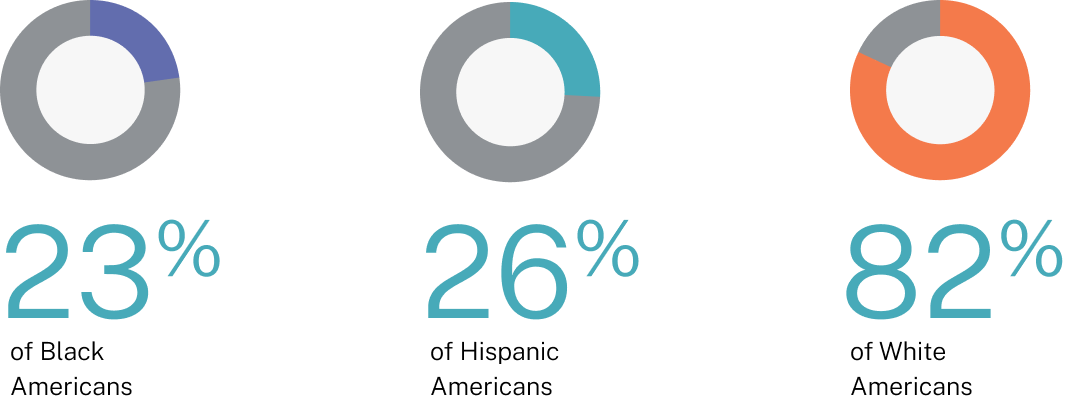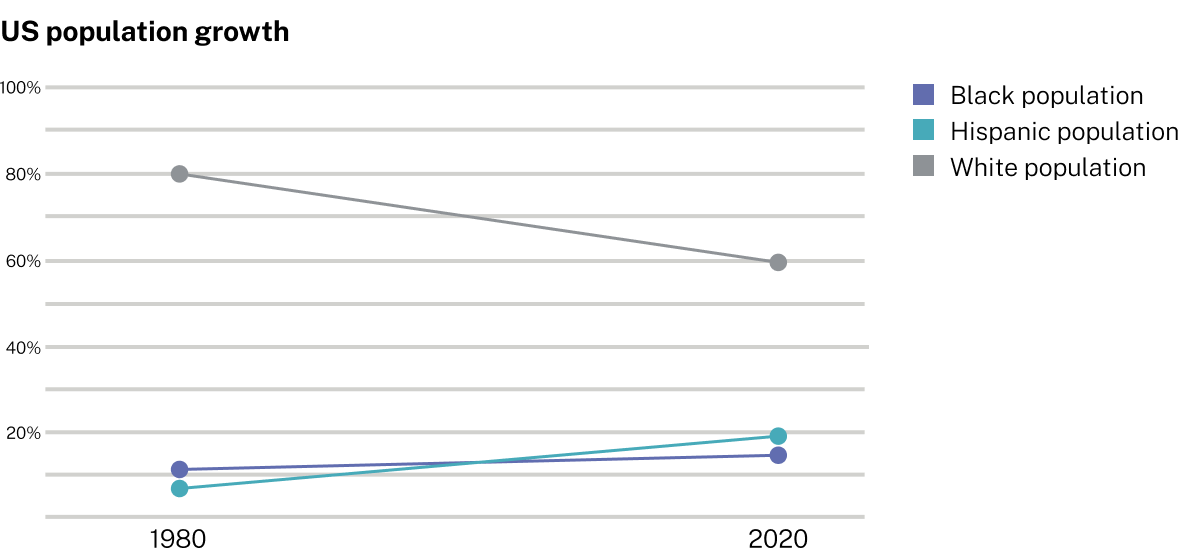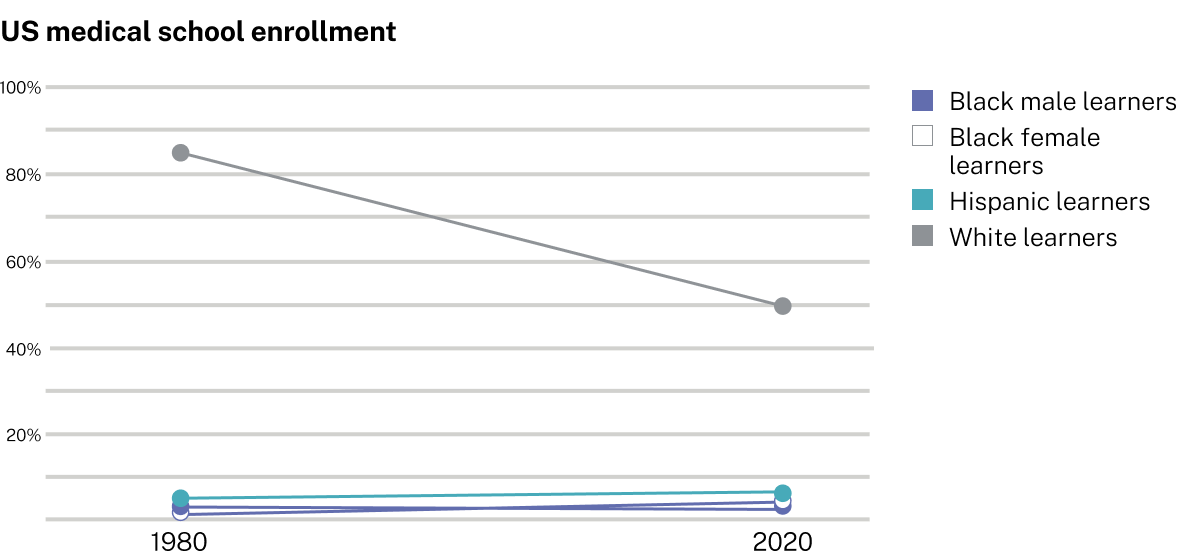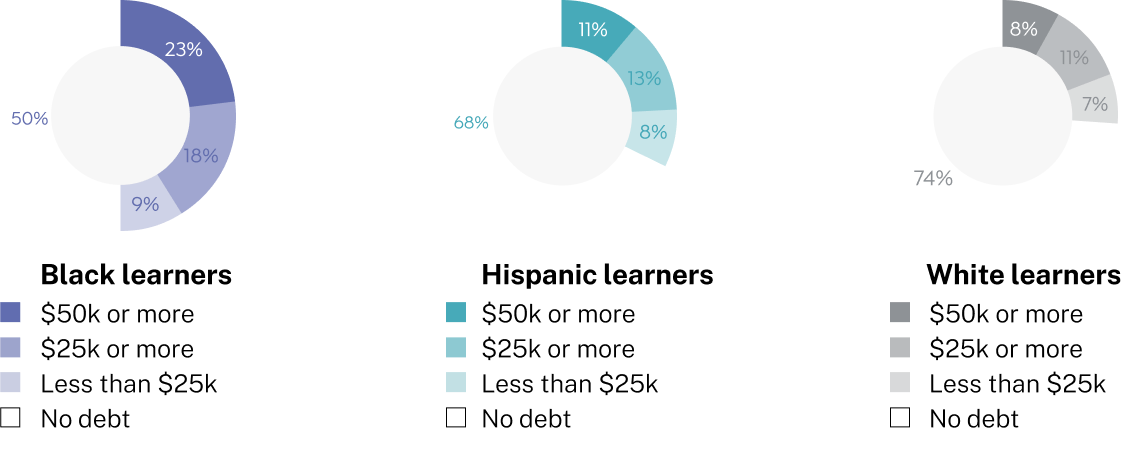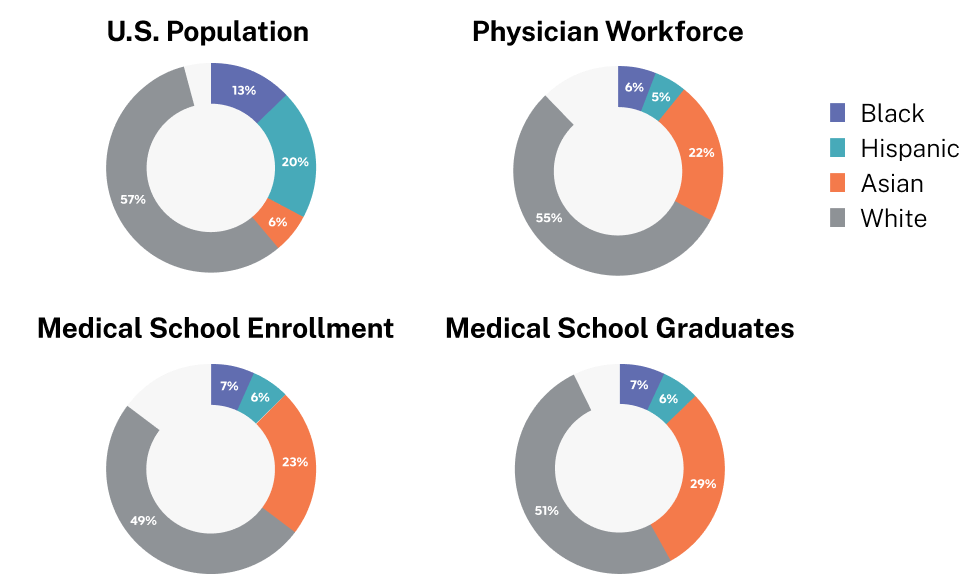In the 1979 – 1980 academic year, the Association of American Medical Colleges notes that Black men and women comprised only 3.1% and 2.2% of medical school enrollment, respectively. Four decades later in the 2019 – 2020 academic year, medical school enrollment for Black women increased to 4.4% while Black men’s enrollment decreased to 2.9%.
More Black men enrolled in medical school 40 years ago than today, and Black women’s enrollment only increased by 2.2% in that time. Meanwhile, the US Black population will increase by 42% between 2016 and 2060.
And this disparity is not limited to the Black community. Hispanic people, the fastest growing ethnic group in the US representing 19% of its population, make up only 6% of enrolled medical students. Even fewer medical students are Native American, Alaskan Native, or Pacific Islander matriculates, with a combined total of less than 1%.
Related findings show that we continually fail to include persons of color in clinical research, discovery, innovation, and translation to the bedside that could eliminate or reduce the impact of chronic disease. Between 2015 and 2019, clinical trials included less than 10% Black participants and only 13% Hispanic participants.
Meanwhile, chronic diseases like cancer, diabetes, and hypertension, as well as maternal and infant mortality, are at least twice as prevalent in racial and ethnic minorities as a result of the economic, social, and environmental inequities faced by these communities.
When health care is informed by who we include, we save more lives. We create thriving communities. We realize equity. Health systems and providers must meet patients where they are, through training and care delivery that understands, responds to, and supports patients’ diverse geographies, values, social, economic, and cultural experiences and needs.
Who we train to become a provider matters. Who conducts research at the bench matters. Who participates in and benefits from clinical trials, discoveries, and innovations matters.
It matters now more than ever before.

